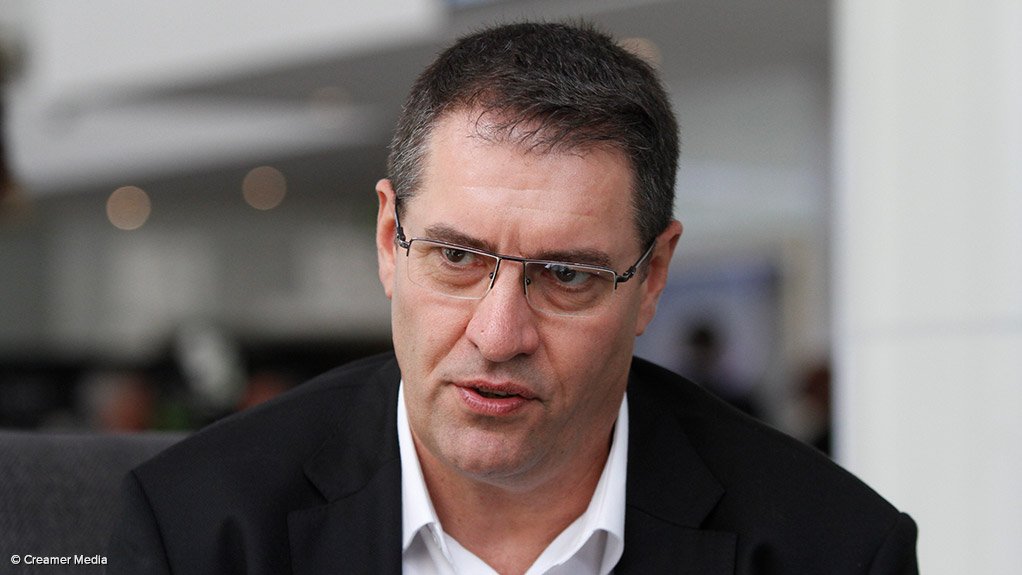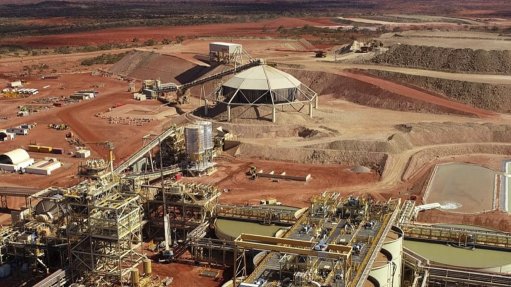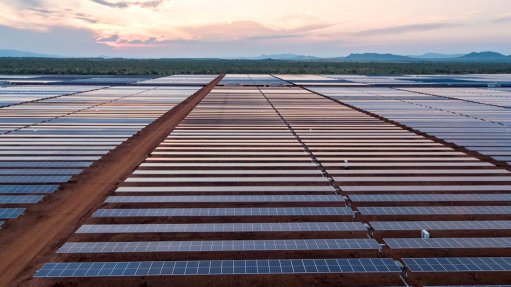Prieska project epitomises South Africa’s base metals potential – Smart
There is a “fantastic opportunity” for the South African base metals sector, given the Northern Cape’s mineralisation, the impending global copper supply deficit, the battery technology trends in the automotive and energy sectors and the improved and modernised exploration and mining techniques, Orion Minerals CEO and MD Errol Smart stated on Thursday evening.
He was speaking at an African Mining Network event during a presentation dealing with Orion’s Prieska mine, titled ‘Developing a 21st Century South African Copper Zinc Mine’.
It’s a sad fact that South Africa has lost the expertise and interest in base metals mining . . . we had a very good base metals history. Some of the very first mines in South Africa were copper mines.
“The Northern Cape had a very successful base metals industry up until the 1980s,” he commented, attributing the disinterest in base metals to a “prolonged period of poor regulation”.
Smart pointed out that the geology in the Northern Cape was “still awesome” and that the lack of interest and development in the area created an opportunity, as local explorers and mining companies were now able to use new and proven techniques to exploit underexplored and underdeveloped base metals reserves.
Smart pointed out that, globally, mining and metallurgical techniques had improved so much over the last decade that underground base metals mining had become very economic.
“The economies of scale match that of openpit mining.”
He also noted that the copper market was moving toward a global deficit. “Production is dropping off and demand keeps rising.”
He added that, unlike precious metals, in which a significant portion of demand was determined by the desire for luxury goods or investment products, copper and zinc were necessary to the function of everyday life.
He cited Maslow’s Hierarchy of Needs, noting that copper and zinc related directly to shelter.
“From discovery to production is a 20-year cycle, and only 1% of discoveries make it into production and become a successful mine . . . the world stopped investing in exploration about 20 years ago and now we’re going to see the negative impact.
“There’s going to be shortfall of supply and it’s going to start in 2022/23 and it’s going to grow and grow.”
Smart noted that July had been the hottest month in recorded history.
Moreover, the ten hottest years have all occurred in the last 20 years.
“Global warming is a reality . . . the big nations have realised that they have to change and one of the changes is moving toward hybrid and electric vehicles.”
Smart added that about 55 lb of copper was used to manufacture a normal petrol or diesel vehicle, while about 165 lb of copper was needed to produce a modern electric vehicle.
“Twenty years from now, we’re going to need more copper and the copper hasn’t even been discovered yet.”
He noted that Orion's decision to focus on copper was a “logical conclusion” adding that mine developers and investors should not focus on short cycles, because while they impact daily and yearly planning, base metals mining was about “20-, 30-, 40-year cycles . . . don’t look at the spikes, don’t look at today, don’t look at the last three weeks. You’ve got to look at the long-term cycles.”
Smart noted that hydrocarbons were being phased out and that, from a renewable energy perspective, about 3.6 t of copper was used in a single wind turbine, of which there were hundreds of thousands worldwide, and more being erected every year.
Regarding zinc, “every bit of steel around us contains zinc – without zinc there are no steel structures”, Smart stated.
“We need 230 000 t/y of new zinc production for the next 20 years – that’s the size of Gamsberg,” said Smart, referring to Vedanta International’s new mine in the Northern Cape province.
Smart noted that, based on analysis of the last 35 zinc mines built around the world, after a deposit had been drilled to resource stage, it still took about 13 years to build a zinc mine.
He noted that the difficulty now was that there had been little to no zinc exploration and the “cheap minable deposits aren’t available”.
Further, “we’re sitting in a situation at the moment when there’s a record low of zinc stockpiled in the world”.
While recognising that zinc prices would remain depressed in the short term, mainly as a result of China’s response to the US-China trade war, he affirmed that the current situation was unsustainable and reiterated that there needed to be a focus on long-term trends.
“We need all of the mines that are currently being developed to come into production, otherwise there’s going to be a shortage in the next five years.”
He noted that there was a 400 000 t operation in Iran that was expected to come online in three years’ time, but also pointed out that the geopolitical uncertainty around US sanction against Iran meant that the operation could be delayed or mothballed.
Additionally, he cited a Chinese project that was being developed at an altitude of 4 500 m – “500 m higher than the Mount Everest base camp”.
He added that the machines needed for that particular operation had yet to be developed and that, while he expected this project to eventually enter production, it would not be before 2024.
Smart stated that Orion’s Prieska copper/zinc project was a high-grade deposit, requiring low capital intensity, that could enter production comparatively quickly.
The recently completed bankable feasibility study estimated that the 2.4-million-tonne-a-year operation would require a capital investment of A$378-million, with the ten-year foundation phase expected to produce 189 000 t of copper and 580 000 t of zinc.
However, he stressed that the only way Prieska could work, was if it employed a modernised approach.
Smart pointed out that Mineral Resources and Energy Minister Gwede Mantashe had spent five years working at the old Prieska mine before its closure in the early 1990s, adding that, back then, the mine was described as being “mechanised” despite the fact that it sent 3 000 people using handheld rock drills underground every day.
He noted that the new mine would, in all likelihood, have only 300 people on site, but added that Mantashe understood that “mines of the future” would be more mechanised and would employ fewer people, “because it’s safer . . . you’ll notice that the Aussies don’t kill people underground . . . because they don’t send anyone underground”.
Smart asserted that there were dozens of mines and projects that should follow Orion’s example, particularly in the Northern Cape, adding that he hoped Prieska became an example for other players in the region.
Comments
Press Office
Announcements
What's On
Subscribe to improve your user experience...
Option 1 (equivalent of R125 a month):
Receive a weekly copy of Creamer Media's Engineering News & Mining Weekly magazine
(print copy for those in South Africa and e-magazine for those outside of South Africa)
Receive daily email newsletters
Access to full search results
Access archive of magazine back copies
Access to Projects in Progress
Access to ONE Research Report of your choice in PDF format
Option 2 (equivalent of R375 a month):
All benefits from Option 1
PLUS
Access to Creamer Media's Research Channel Africa for ALL Research Reports, in PDF format, on various industrial and mining sectors
including Electricity; Water; Energy Transition; Hydrogen; Roads, Rail and Ports; Coal; Gold; Platinum; Battery Metals; etc.
Already a subscriber?
Forgotten your password?
Receive weekly copy of Creamer Media's Engineering News & Mining Weekly magazine (print copy for those in South Africa and e-magazine for those outside of South Africa)
➕
Recieve daily email newsletters
➕
Access to full search results
➕
Access archive of magazine back copies
➕
Access to Projects in Progress
➕
Access to ONE Research Report of your choice in PDF format
RESEARCH CHANNEL AFRICA
R4500 (equivalent of R375 a month)
SUBSCRIBEAll benefits from Option 1
➕
Access to Creamer Media's Research Channel Africa for ALL Research Reports on various industrial and mining sectors, in PDF format, including on:
Electricity
➕
Water
➕
Energy Transition
➕
Hydrogen
➕
Roads, Rail and Ports
➕
Coal
➕
Gold
➕
Platinum
➕
Battery Metals
➕
etc.
Receive all benefits from Option 1 or Option 2 delivered to numerous people at your company
➕
Multiple User names and Passwords for simultaneous log-ins
➕
Intranet integration access to all in your organisation





















